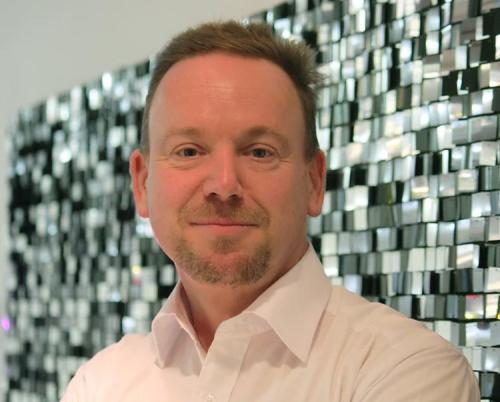 Read More
Read More
Creating new institutions to meet emerging needs in cities

Listen to This Article
As cities navigate the complexities of climate change, migration, and artificial intelligence, local leaders are facing critical questions: Are today's public institutions ready for new challenges and opportunities? And what emerging needs will require them to not just add one or two positions, but instead build something new?
Questions like these are what led longtime Bloomberg Philanthropies partner Geoff Mulgan, a professor of collective intelligence, public policy, and social innovation at University College London, to co-found The Institutional Architecture Lab. It’s intended to serve as a community and resource to help leaders conceive, create, and design new government institutions that are ready to adequately address the mounting challenges of today and tomorrow.
“What we're trying to do is to build up the methods, the tools, and the capacities of governments at every level to widen the imagination” around new institutions, Mulgan explains. He adds that efforts like Bristol City Leap, an ambitious decarbonization partnership in a modestly sized UK city, demonstrate that cities “can organize things in dramatically different ways from a generation ago.”
For city leaders unsure of when, why, and how launching new institutions might be warranted, Mulgan and his team recently published a toolkit that offers a concise framework for crafting organizations that can have impact for generations to come.
Diagnosing the problem and creating space for something new.
Nearly all local leaders have wrestled with a challenge left unaddressed by existing institutions. They’ve also seen their share of cases where there are existing public agencies or organizations that residents expect to handle a problem, only to be left disappointed—perhaps because current approaches are too hierarchical or slow.
This sort of thinking was key when Mexico City created a new agency for digital innovation under then-Mayor Claudia Sheinbaum and expanded it with the support of Bloomberg Philanthropies’ innovation team (i-team) program. Rather than rely on third-party vendors for online government services, the city built new, in-house capacity to develop a wide array of digital products—and then went on to, among many other achievements, establish one of the largest free, city-provided WiFi networks in the world.
Mulgan sees areas such as mental health, decarbonization, and the intersection of AI and digital procurement as especially fertile terrain for creating new city institutions. And he thinks a key part of city leadership is recognizing such cases—and specifically, acknowledging when existing institutions can’t be adapted or supported but, instead, need to be complemented by new ones.
“My hope now is that we're in a period when there is more confidence: a return to realizing [that] you need public institutions to solve shared problems,” he says. “Not everything can be contracted out.”
Learning from successful institution building.
Cities around the globe have been finding ways to harness new institutions to tackle systemic challenges, and those choices hold key lessons for city leaders considering this approach.
Again, Mulgan uplifts Bristol City Leap, as “an interesting example of a structured way to connect long-term public and private commitments to decarbonization in a city.” In that case, Mayor Marvin Rees wrangled over $1 billion in investment in partnership with private-sector entities to put his city on the path to carbon neutrality. The new institution is pursuing renewable energy infrastructure, like low-carbon heat sources at schools and public housing.
Another opportunity that institution building provides is an ability to fill gaps in existing services in creative ways. Mulgan notes that, in particular, this could include creating institutions with some degree of independence from the bureaucracy, but still accountable to the mayor. He points to a range of examples. One is Open Research Amsterdam, a platform for local leaders and universities in that city to share knowledge with editorial support from the city’s chief science officer. Another is Barcelona Activa, which leads on economic development in the city—and currently has an eye on making the city stand out internationally for its sustainability practices—but is a distinct part of local government.
Making a new institution durable.
Mulgan and his colleagues’ toolkit breaks down the process of institution building into discrete and executable steps, beginning with what he calls the fundamentals: teasing out the task, people, and shared ethos—or guiding mentality—that will bring a new city body to life. While city leaders interested in this work can find more detailed steps to help them get started in the toolkit, that last element, in Mulgan’s view, is especially common among the most successful new local institutions.
“This is core to how the public sector works at its best: not only building one-year, three-year, or five-year programs, but also building up teams of people in institutions who have a strong sense of values,” he says.
An entrenched value set can produce something vital: sustainability. That’s what Mexico City has seen with its digital innovation agency since Mayor Sheinbaum, who is now running for president, left office. Their work wasn’t just baked into an individual or even a series of short-term projects, but has been institutionalized for the long-haul as a standalone powerhouse inside the local government.
“If you’re a mayor, of course that’s a much better legacy to leave than just a program which is gone as soon as you’re gone,” Mulgan says. “And if I was a mayor or a [city leader] of any kind, I would certainly be concerned about leaving behind a long-term legacy, and usually that is embodied in institutions.”
Learn more about The Institutional Architecture Lab and creating new institutions with their toolkit here.

